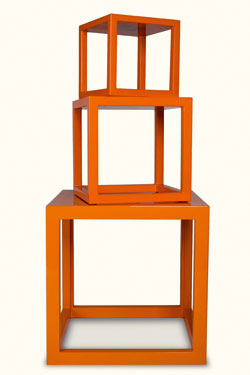 |
A. A lacquered piece can be a lustrous focal point in any room, whether it is an 18th-century antique, a Chinese chest, an Art Deco desk, or the dining table you got at the used-furniture store down the street. There is more than one way to achieve that super-glossy look. The most obvious method is to use lacquer—a lacquer-based paint, a clear finish, or both. Designers and refinishers love lacquer because of its beautiful, durable, crystal-clear finish. It also has the advantage of being quick-drying. Do-it-yourselfers, on the other hand, approach it with trepidation because it requires several coats and is highly volatile, toxic, and flammable. It’s a little easier to spray than to brush on, so it’s best to leave it to professionals who have well-ventilated spraying booths. Jeff Hester, vice president of Hester Painting and Decorating (7340 N. Monticello Ave., Skokie, 847-677-5130; hesterdecorating.com), prefers refinishing with high-gloss enamel and high-gloss oil varnish, especially for cabinetry or furniture in the kitchen or bathroom. “We don’t use lacquer—it’s too brittle,” he says. “It doesn’t hold up to moisture. It will crack if it gets wet, because it sits on top of the wood; it doesn’t soak in.”
Tamara Morrison, who owns Tamara Backdrops and Studio (3121 N. Rockwell St., 773-596-5588; backdrops.com), says that to get lacquer-like finishes, she prefers oil-based paint to actual lacquer. Often she will brush on a primer and then spray on two coats to get a really smooth look. “And we use additives in the paint to smooth it out so the brush strokes don’t show,” she says. She will add a sealer only if the piece will be used around water—usually an oil-based urethane. She says she would charge about $1,000 to refinish a 28-by-60-inch Parsons table.
But Philip Sassano of Philip Sassano Design (465 Spring Rd., Elmhurst, 630-782-5563; philipsassanodesign.com) is a lacquer partisan. “There’s no substitute for lacquer,” he says. “You can come close with some high-end products. But it’s very rewarding to pick up an old piece from a flea market, something that has faded over time, put on the lacquer, bring out the color, and make it sing.” He estimates he’d charge $700 to $900 for a 48-by-60-inch Parsons table.


